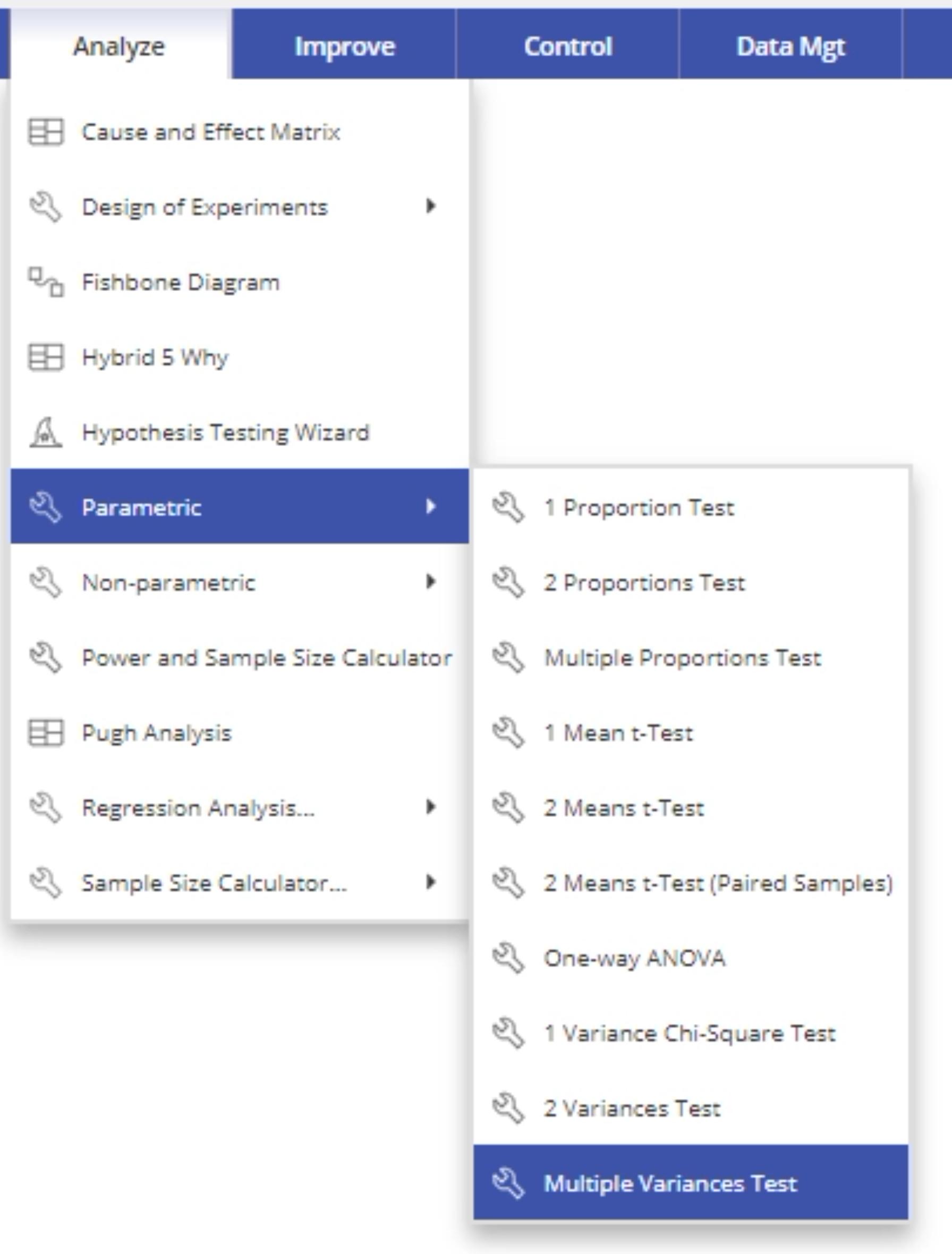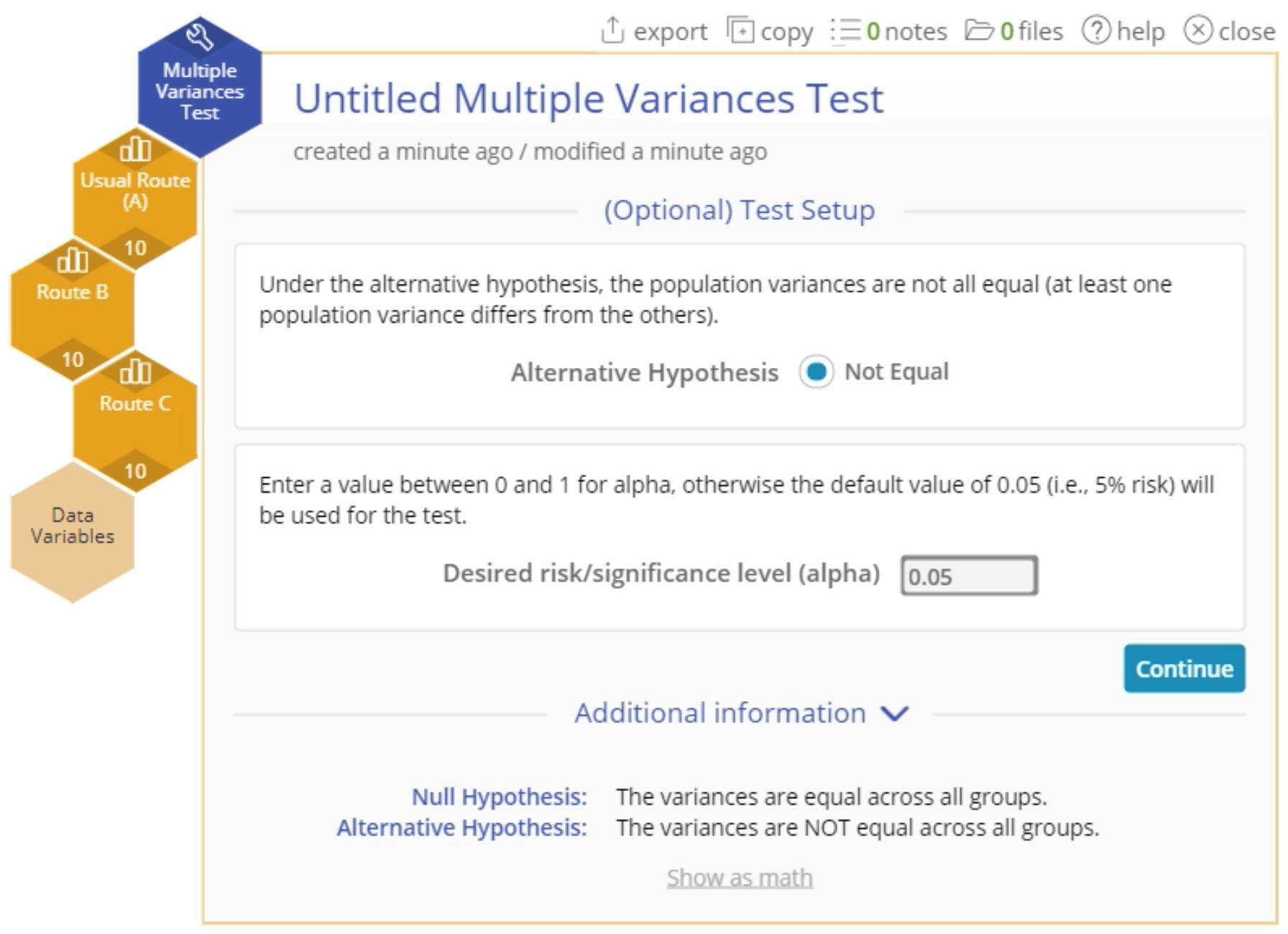Multiple Variances Test Tutorial
When to use this tool
Use the Multiple (> 2) Variances Test, also called the Homogeneity of Variances test, to compare the variances of multiple independent populations. For example, you want to run an ANOVA to test whether 3 group means are the same, but you first have to validate that the variances of the 3 groups are equal, to satisfy the equal variances assumption made by the ANOVA test,
EngineRoom uses the Modified Levene test to evaluate the variances, which makes the following assumptions:
- The data variables are continuous.
- The observations within the variables are randomly sampled.
- The data variables are independent of each other.
Note: This test does not require that the groups be normally distributed.
Using EngineRoom
Note: You must have the actual/raw data to run this test. Summary data cannot be used to run the Multiple Variances test.
Your data must be formatted in one of two ways: the individual samples may be in separate columns, or all samples are combined in a single column with a second column containing the corresponding group membership. We will use the format showing samples in separate columns:
Select the Multiple Variances Test from the Parametric Test menu OR follow the steps in the Hypothesis Testing Wizard for three or more continuous variables.
Example:
In this example, we have data on the time taken to complete deliveries using three different routes (the data is taken from the ANOVA test help article). We will use the standalone Multiple Variances test from the Parametric menu to test whether the route variances differ significantly.
Steps:
- Select the Analyze menu > Parametric > Click on Multiple Variances Test:
- Drag each route variable onto the Data variable drop zones which appear on the study. Click Continue:
Note: the only alternative hypothesis option is 'Not Equal' for this test.
- The Multiple Variances test output is shown:
The large p-value shows that the test is not significant - we can conclude that the variances do not differ significantly, and proceed with the ANOVA test.
Note: The ANOVA test procedure runs this test in the background as part of the assumptions check, so you do not have to run it before using an ANOVA test in EngineRoom.
Multiple Variances Test Video Tutorial
Instructor Resources
Was this helpful?




